SCHRACK Pendant lights
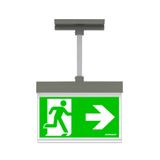


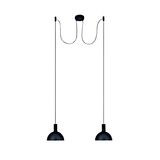
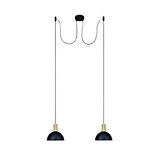
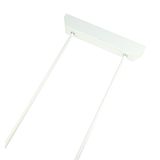

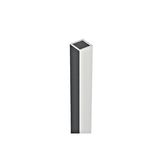



Schrack Pendant Luminaires for commercial interiors
Project teams use these ceiling-suspended bodies when they need predictable photometry, quick install minutes, and a clean ceiling line. Linear profiles, cylinders, and ring forms ship with matched drivers and accessories. Typical electricals: 220–240 V AC, PF ≥ 0.95, THD ≤ 10–15 % on pro ranges; surge immunity 2 kV L–N / 4 kV L/N–PE. Light engines meet LM-80 with TM-21 projections to L80/B10 ≥ 50–100k h (model-dependent). Ambient ratings commonly −20…+35/45 °C.
Product families and optics engineers specify
Linear trunkable pendants (direct or direct/indirect), cylindrical spots with field-swappable optics (narrow/medium/wide), and ring luminaires with continuous diffusers. Optic choices: micro-prismatic for low UGR, opal for soft ambient, wall-wash blades, and asymmetric aisle lenses. Outputs span 1–12 klm per fixture; efficacy typically 120–160 lm/W for linear profiles and 100–140 lm/W for compact forms.
Schrack Suspension Lights mounting, feeds, and canopies
Single or twin wire kits with tool-less height set, rigid down-rods for exact datum, and sloped-ceiling adapters. Through-wiring (3/5/7-core) supports mains, control (DALI-2/1–10 V), and emergency conductors along a run. Center-feed, end-feed, and offset canopies keep junctions invisible over desks. For seismic or high-traffic halls, secondary safety cables and anti-twist grippers are part-numbered per length to simplify BOMs.
Electrical and photometric specifications for Schrack pendants
CCT 2700–6500 K, SDCM ≤ 3 for colour consistency; CRI ≥ 80 standard with CRI 90 options where fidelity matters. UGR ≤ 19 achievable in compliant office layouts with micro-prismatic optics and correct row spacing. Dimming: on/off, DALI-2 groups/scenes, 1–10 V analogue; selected families add wireless room bridges. IK07–IK08 on metal bodies; IP20 interiors with IP40 versions for dust-prone corridors. Driver acoustic noise vetted for open offices.
Schrack Decorative Pendants for hospitality and retail
Trim rings in black/white/metallic finishes, satin diffusers, and dim-to-warm engines create warm ambience without giving up efficacy. For double-height lobbies, long-drop kits (3–6 m) ship pre-cut; ring pendants accept uplight modules to lift ceiling brightness. In front-of-house layouts, planners often mix feature pieces with task-oriented schrack hanging fixtures over service counters to keep vertical illuminance honest.
Controls and emergency integration with Schrack drivers
DALI-2 drivers expose energy/fault objects to room controllers; corridor function and daylight-hold reduce baseloads after hours. Self-contained emergency (1 h/3 h) or central battery variants use hot-swap gear trays; test inputs land on BMS. Coordinate luminaire SPD level with board-level SPDs to avoid overstressing drivers during switching events.
Applications and layout logic across sectors
Open offices: direct/indirect lines at 2.7–3.0 m AFF deliver 500 lx at task with UGR control. Studios and labs: cylinder spots with medium beams above benches; linear fills maintain uniformity. Hospitality and retail: ring and drum bodies as feature elements, linear accents on merchandise walls. Where brand colour is critical, specify CRI 90 with strong R9 and keep CCT consistent—this aligns well with briefs that reference schrack modern pendant lighting for customer-facing zones.
Schrack selection criteria for B2B engineers
- Lux and glare: target EN 12464-1; use micro-prisms and correct spacing for UGR ≤ 19 near VDTs.
- Optics and beam: narrow/medium for task islands; wide/opal for ambient; add indirect where ceiling brightness helps comfort.
- Colour policy: CRI 80 back-of-house; CRI 90 for retail/clinics; hold SDCM ≤ 3 across floors.
- Controls: DALI-2 where groups/scenes and analytics are required; 1–10 V where simplicity wins.
- Structure: hanger load, ceiling substrate, and allowable drop; use secondary safeties above circulation.
- Service model: tool-less trays, standardized canopies, and through-wiring kits shorten fit-out and MTTR.
Procurement and kitting for rollouts with Schrack part codes
Fix a per-space kit: body (lumen pack, optic, CCT/CRI), driver interface, suspension type/length, feed kit, joiners, emergency option, and canopy finish. For continuous lines, lock feed position and joiner count per bay length so ceiling crews don’t improvise. Stock spare diffusers and a small set of drivers matched to the top movers.
Advantages of working with Bankoflamps
Bankoflamps aligns pricing with your room schedules and exposes live EU stock before you book installers. Quotes typically land in about an hour. Orders by EAN/MPN prevent variant drift; your portal shows lead times, shipment status, and downloadable price lists. Approved partners can use post-payment up to 30 days. We consolidate partials to reduce freight and keep price-validity windows stable. Your account manager cross-checks optics, SPD level, control protocol, suspension hardware, and emergency gear against drawings—so pallets arrive complete and ready to hang.